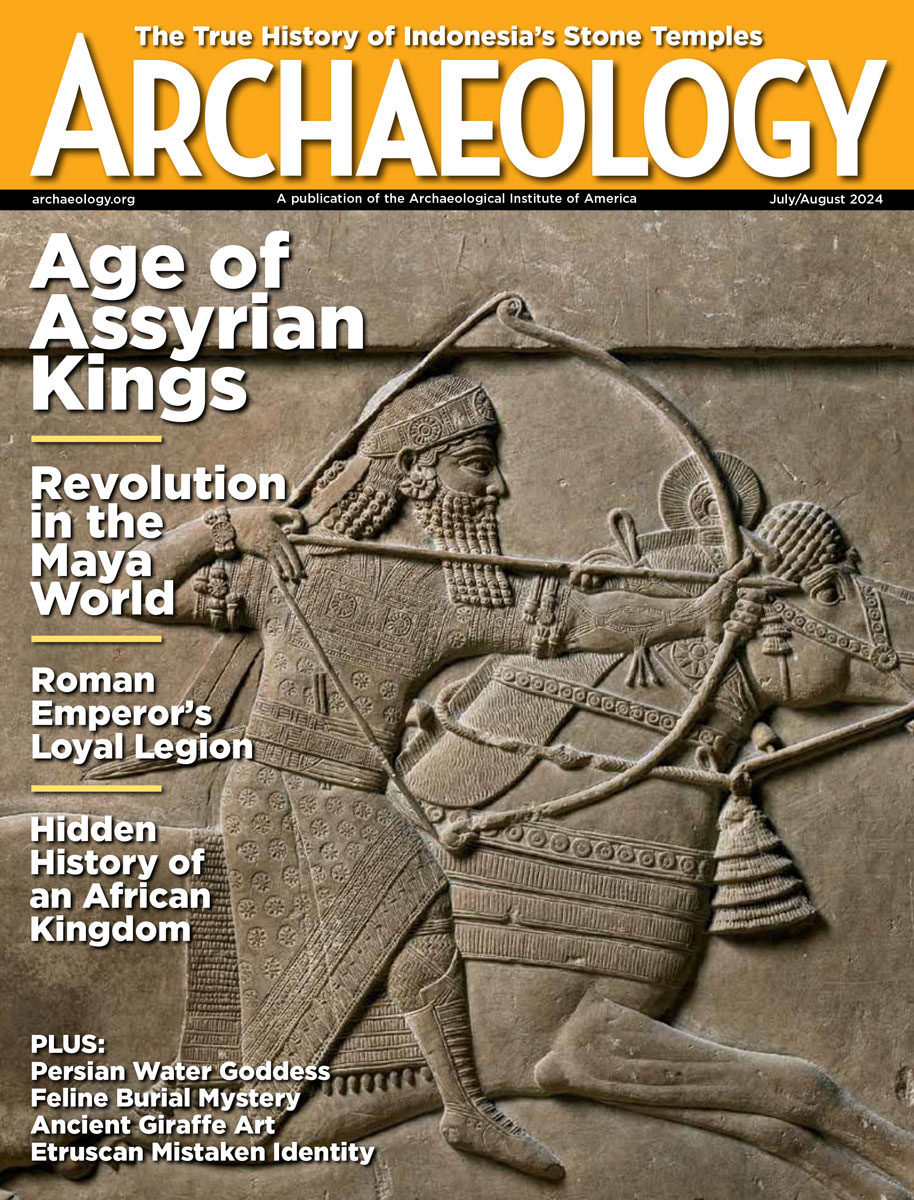Thursday, August, 28
August 28, 2008
Nashville police are looking for clues in the shooting death of Vanderbilt University anthropology professor Pierre Colas. His sister, Marie Colas was wounded. Graduate student Danielle Kurin told the press, “He went above and beyond what a professor is expected to do. He was like a friend and mentor, really a role model. In that way, he affected so many people’s lives.” Â
A new five-year project will use infrared technology to photograph the Dead Sea Scrolls and post the images online. “This will ensure that the scrolls are preserved for another 2,000 years,” said Pnina Shor of the Israeli Antiquities Authority. Â
The foundation of George Washington’s boyhood home in Virginia will be backfilled next month. Â
Ground-penetrating radar indicates that rectangular holes had been dug in an unmarked section of an Iowa cemetery, suggesting that local tales of the area being used to bury those who died while fleeing slavery on the Underground Railroad could be true. “It’s the most unusual cemetery I’ve ever seen,” said Steve De Vore of the National Park Service. Â
“Professional looting has ended, although just like anywhere in the world there may be some occasional digging by children,” according to Abbas al-Husseini, who is currently a professor at Iraq’s Al Qadisiyah University, and former chairman of the state board of antiquities. Â
Human and animal bones were uncovered during the excavation of a septic system on the Hawaiian island of Molokai. All of the bones were reburied at the site. Â
University of Witwatersrand paleoanthropologist Lee Berger responds to the new study of Palauan bones in PLoS ONE, which disagrees with his interpretation that the island’s ancient residents were dwarfs, for National Geographic News. Â
National Geographic News also has video of the mummies being removed from the intact Wari tomb discovered in Peru. Â
Details of the new management plan at the Giza Plateau are available at Al-Ahram. “We are making it much nicer for the tourists,” said Shaaban Abdel-Gawad, head of the ancient Egyptian department at the secretary-general’s office.
- Comments Off on Thursday, August, 28
Wednesday, August 27
August 27, 2008
There are 345 registered historical monuments and archaeological sites, and several museums, within the areas of Georgia that have suffered heavy fighting and bombing by the Russians. “At the moment, there is no way to get to the key areas to assess the damage. It is not even safe for local residents. There is a real risk of unexploded mines and the armed forces say it will be two weeks before the territory is safe enough to enter,” said Maka Dvalishvili, director of the Georgian Arts and Cultural Centre.
An intact tomb from Peru’s Wari culture was discovered at Huaca Pucllana, in Lima. The tomb, which dates to 700 A.D., contained a female mummy and the remains of two other adults and a child.  This article on the find offers a little information about how the mummies were wrapped and the mask worn by the woman.  The Daily Mail from Britain has published fantastic photographs of the tomb and its contents. Â
Archaeologists have uncovered a few artifacts on the shores of O’Reilly Island that could be from the Erebus and the Terror, two British ships that sank in the Arctic on the nineteenth-century expedition led by Sir John Franklin. “We do expect to find a reasonably well-protected, well-preserved hull,” said Parks Canada archaeologist Robert Grenier. Â
Claims by Lee R. Berger that bones from Palau are “Hobbit-like” dwarfs have been refuted by American and Australian scientists, who say that the bones represent normal, modern hunters and gatherers. “He did not take the time to understand the area in which he was working – its entire history, not just the skeletal stuff,” anthropologist Greg C. Nelson of the University of Oregon said of Berger’s “rush to publish.” Â
The Alborz Dam will soon inundate ancient cemeteries in the Savadkuh region of Iran. This article describes the skeletons found in an Iron Age burial ground in 2005.  Â
Looters found artifacts in western Turkey six years ago in an area outside of Sardis that archaeologists will now investigate. “We believe that there is an ancient Roman city hidden beneath the soil,” said Suleyman Cinar, mayor of the nearby village of Buyukhanli. Â
Archaeologist Anne Corscadden Knox will travel from Ireland to lead an underwater investigation off Key Largo, Florida. The team will try to determine if a wreck is a paddle steamer that sank during the Civil War while carrying Union soldiers to New Orleans.  Â
The remains of 33 Australian Aborigines were reclaimed last month from the Smithsonian Institution, but Australian archaeologist Sally May says that many more bones are still unclaimed. Â
What do you think? Museum curator Paul Jarman won a Hadrian look-alike-contest.
- Comments Off on Wednesday, August 27









